If you’re looking for a vacation spot, go no further than the Philippines, the world’s second-largest archipelago after Indonesia. Not only does it have beautiful islands and beaches, but also verdant rainforests, towering volcanoes, and colorful coral reefs; and its peaceful colonial towns and bustling megacities showcase a diverse range of cuisines and cultural traditions.
The Philippines is a Southeast Asian island country with over 7,640 islands, making it the world’s second-largest archipelago. It is known for its stunning beaches, verdant rainforests, towering volcanoes, and colorful coral reefs. The country’s colonial towns and bustling megacities offer a diverse range of cuisines and cultural traditions to explore. Luzon and Mindanao are the largest and most populated islands, characterized by their hilly terrain and rich plant and animal life.
Manila, the Philippine capital, may have maze-like streets, but its numerous museums, galleries, and marketplaces make up for the challenge of navigating the city. Most tourists spend a day or two exploring the historic core before venturing out to the beautiful beaches or visiting well-preserved colonial cities like Vigan and Zamboanga.
While the Philippines is famous for its breathtaking beaches and islands, it also boasts impressive old churches, mosques, and palaces. Boracay, renowned for its white beaches, and El Nido, with its stunning karst landscape and crystal-clear waters, are popular destinations. The country also offers other attractions like the magnificent rice terraces of Banuae and the unique Chocolate Hills. Palawan and Cebu provide a variety of beautiful beaches, exciting water activities, and breathtaking vistas.
The Philippines is an ideal destination for those seeking a true castaway adventure. Visitors can relax on postcard-perfect beaches, savor coconut drinks, and explore stunning reefs through activities such as snorkeling and scuba diving. Whether you prefer an active or relaxing vacation, the Philippines offers something for everyone among its more than 7,000 islands in the western Pacific.
17. Apo Island
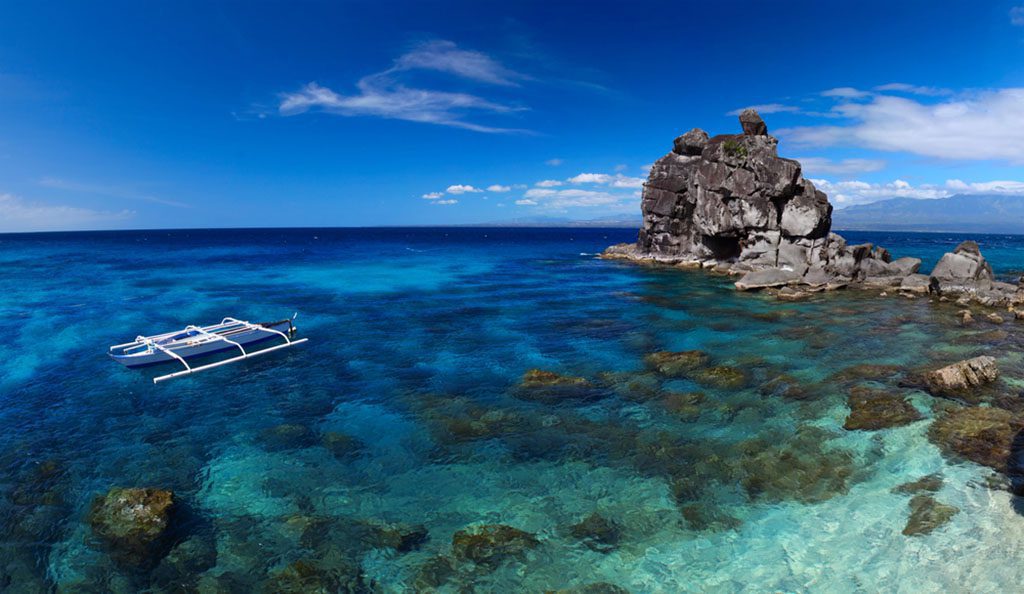
A picturesque view of a white national boat anchored on the clear tropical sea of Apo Island, Philippines. Image source: Dudarev Mikhail/Shutterstock.com
Apo Island, a volcanic island off the southern coast of Negros, is a protected section of the Coral Triangle. The island is most well-known for its excellent diving and snorkeling conditions, which are among the best in all of the Philippines.
The marine sanctuary and reserve that were established around the island in 1985 are largely responsible for the excellent diving conditions there. Due to the fishing ban that has been in place for over three decades, the seas around the island are now home to a plethora of coral and marine life, including anything from brightly colored clownfish and giant sea fans to slow-moving hawksbill turtles.
There are also beautiful beaches on land, which are suitable for sunbathing since they are built from finely ground white coral. If you’re in the mood to get some exercise, the island has several lovely walking routes with views of Negros and Mount Talinis.
16. Batanes Islands
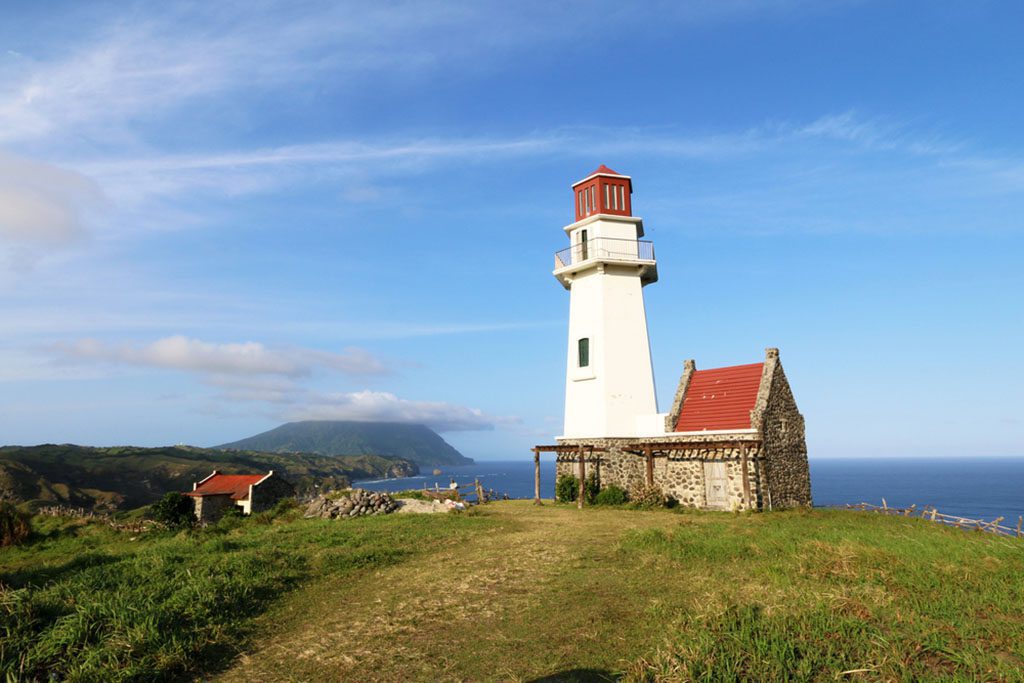
A magnificent view of the Mahatao or Tayid lighthouse standing tall on Batan Island, Batanes, Philippines. Image source: KYTan/Shutterstock.com
Between Taiwan and the Philippines lies a collection of islands known as the Batanes. As the most inaccessible section of the country, the north is also one of the best locations to really immerse oneself in native customs and practices; the language, the climate, and the traditions are all distinct from the rest of the country. The Batanes provide a unique glimpse into the past.
Only three islands in the Batanes archipelago have permanent populations: the major island, Batan; the historic Sabtang; and the remote Itbayat. Various types of terrain, including jungle-covered volcanoes, rolling hills, fertile yam and cow farming, and slender strips of white coastline, can be found on each of the islands.
The Batanes may seem to be an idyllic tropical paradise in photographs, and in many ways they are, but they are also often hit by powerful typhoons. Structures are constructed on modest stilts, with solid limestone walls and grass roofs, to resist the effects of floods, earthquakes, and other natural calamities.
15. Siargao
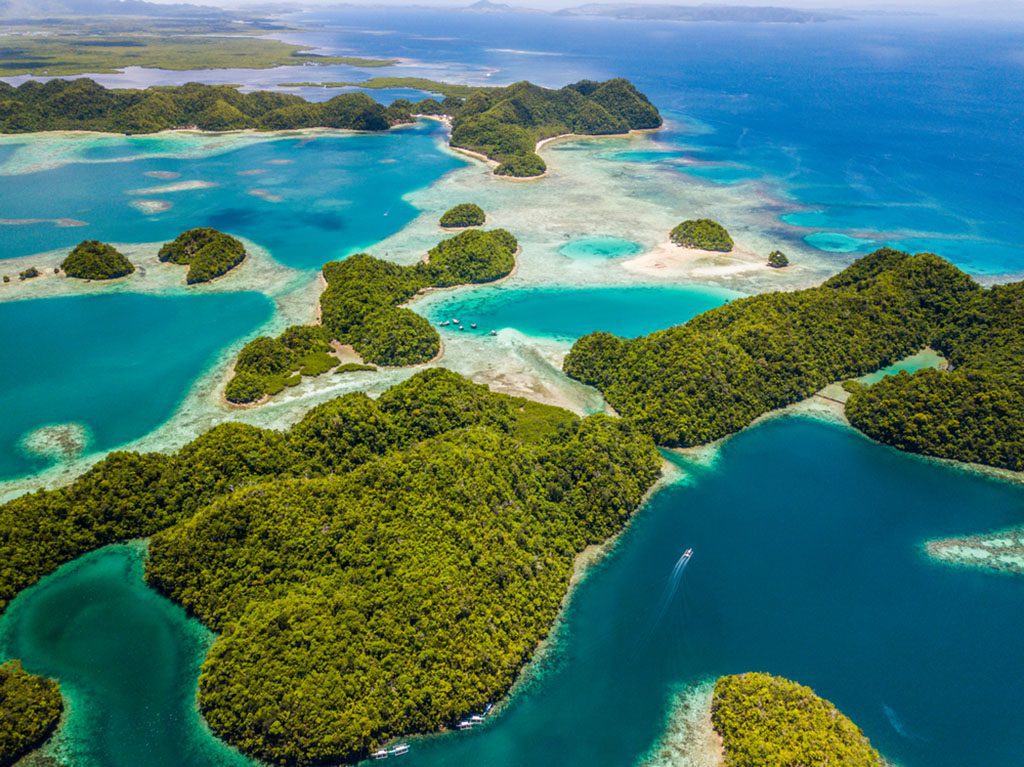
A serene view of the beautiful Sugbba Lagoon in Siargao, Philippines. Image source: Reefonline/Shutterstock.com
Siargao, a teardrop-shaped island in the Philippines, is a tropical paradise with pristine beaches, clear lagoons, and palm-tree-lined coconut farms. Why Conde Nast Traveler readers chose this island as the best in the world is easy to understand.
This unspoiled island has few attractions to offer visitors. As a matter of fact, there are just a few hundred thousand people who call this place home. It’s difficult to travel there since it lacks an airport, but that only means fewer visitors and more peace and quiet when you get there.
Siargao is often regarded as the best surfing in the Philippines, and for good reason: the island is home to no less than 15 excellent breaks, including the world-famous Cloud Nine. There are several places to learn how to surf or rent equipment, and you can also go stand-up paddling, snorkeling, or do any number of other water sports.
Check out the best of what’s on dry ground, from mangrove swamps and winding rivers to spectacular rock formations and waterfalls, as well as intriguing species. If you’re in the area, you should definitely stop at Dapa, the most important port in the area.
14. Malapascua Island
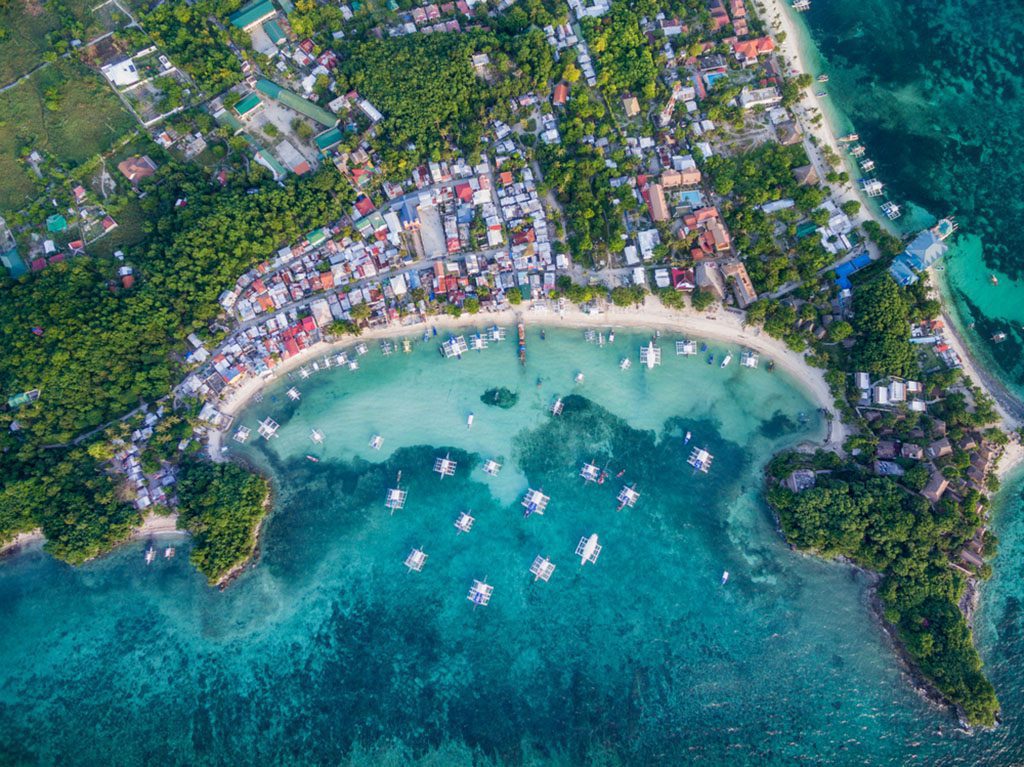
A vibrant and sunny day on the stunning Malapascua Island in the Visayan Sea, Philippines. Image source: photosounds/Shutterstock.com
Malapascua is a small island in the Visayan Sea, but it is well-known among divers and snorkelers for the abundance of marine life they can see there, including thresher sharks, pygmy seahorses, blue-ringed octopus, manta rays, and sunken shipwrecks.
Malapascua, a little island off the coast of Cebu, is rapidly developing, and you can always count on there being some kind of local festival or event going on there. The island is home to several luxurious resorts and beautiful palm-lined beaches, making it an ideal location for a relaxing beach vacation.
Both the Mona Shoal, where pelagic thresher sharks are often seen, and the Dona Marilyn ferry, which sank in a storm in 1984 and is now an artificial reef teeming with scorpionfish, marble rays, and white-tip reef sharks, are among the best diving locations in the world.
13. Camiguin
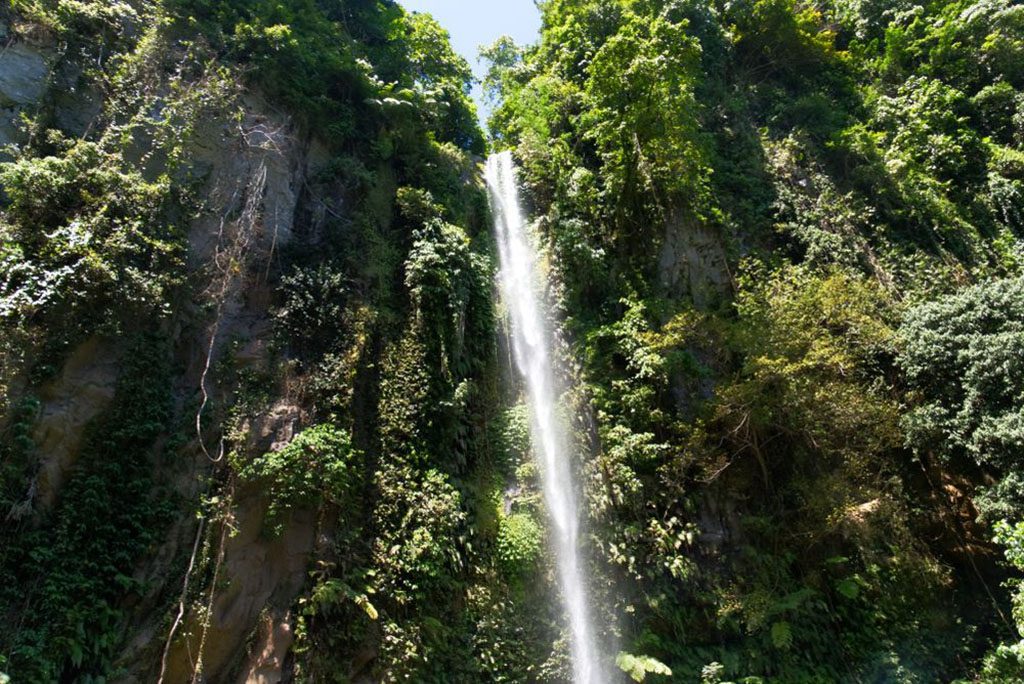
A mesmerizing view of the magnificent Katibawasan Waterfall on Camiguin Island, Philippines. Image source: Happy Auer/Shutterstock.com
Camiguin is a little island province in the Bohol Sea, but it packs a serious feeling of adventure thanks to its ivory beaches, shimmering lagoons, and steep volcanic environment.
Camiguin is unique in that it has more volcanoes per square mile than any other island in the world, despite being far smaller than any others. You can do scuba diving, snorkeling, and swimming, all of which are traditional water sports in the Philippines, but the main draw is the chance to hike to jungle waterfalls and climb volcanic peaks like Mount Hibok-Hibok.
Despite being only over the water from the main island, Camiguin has been relatively untouched by modernization and hence avoids the swarms of visitors who frequent the nearby island of Palawan. However, it does provide a more tranquil and genuine beach getaway that is intermingled with action.
12. Siquijor
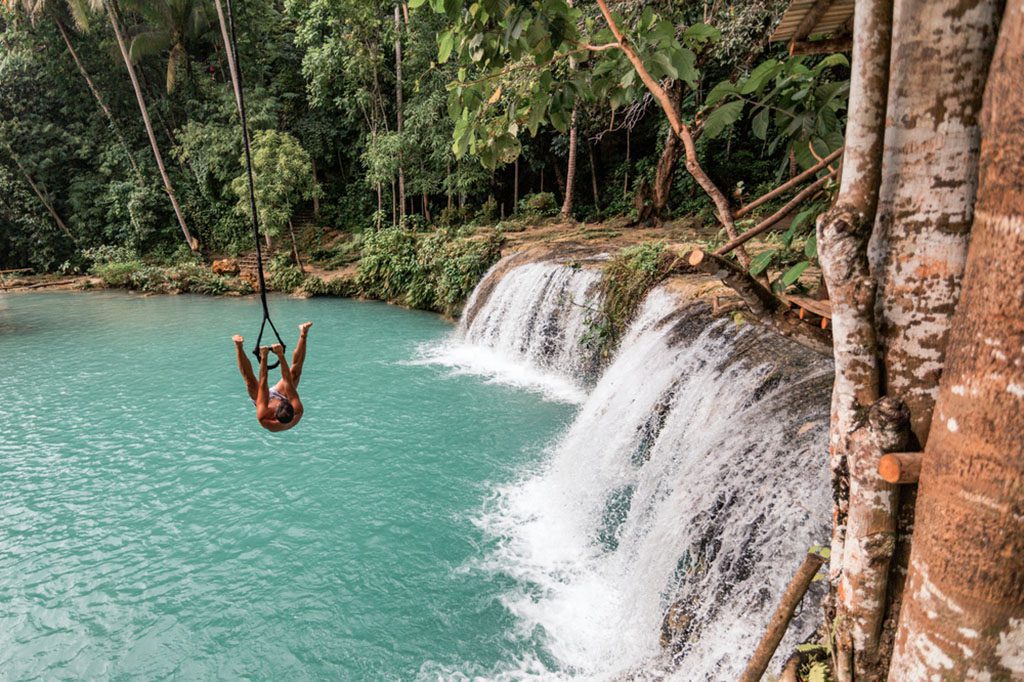
A young Caucasian man enjoying a thrilling rope swing experience over the enchanting Cambugahay Falls in Siquijor Island, Philippines. Image source: Daniel Carmona Ruiz/Shutterstock.com
Siquijor, a province of the Philippines, is located on a small island in the Central Visayas. The island’s abundance of fireflies earned it the name “Island of Fire,” but the island’s old witchcraft traditions are what really set it apart. Here, mangkukulam (healers) who live in the island’s mountains utilize only substances found in nature to prepare ointments and treatments.
However, the island has gradually grown and improved over the years, and today there is a wide range of reasonably priced luxury beach resorts to choose from. Many of these popular destinations attract scuba divers because of the abundance of professional dive guides who can show you the best-kept secrets of the area.
Sandugan Point and Tambisan Point, both of which are rich in coral, provide excellent diving destinations. The three underwater caverns of Paliton Beach are famous for harboring sleeping reef sharks. Manta rays and barracudas can be seen at other diving sites near the island.
Siquijor has a lot to offer, and you don’t have to be a scuba diver to appreciate it. In addition to sunbathing and swimming, other activities include snorkeling, cycling, hiking to waterfalls, caving, and sunbathing.
11. Palaui
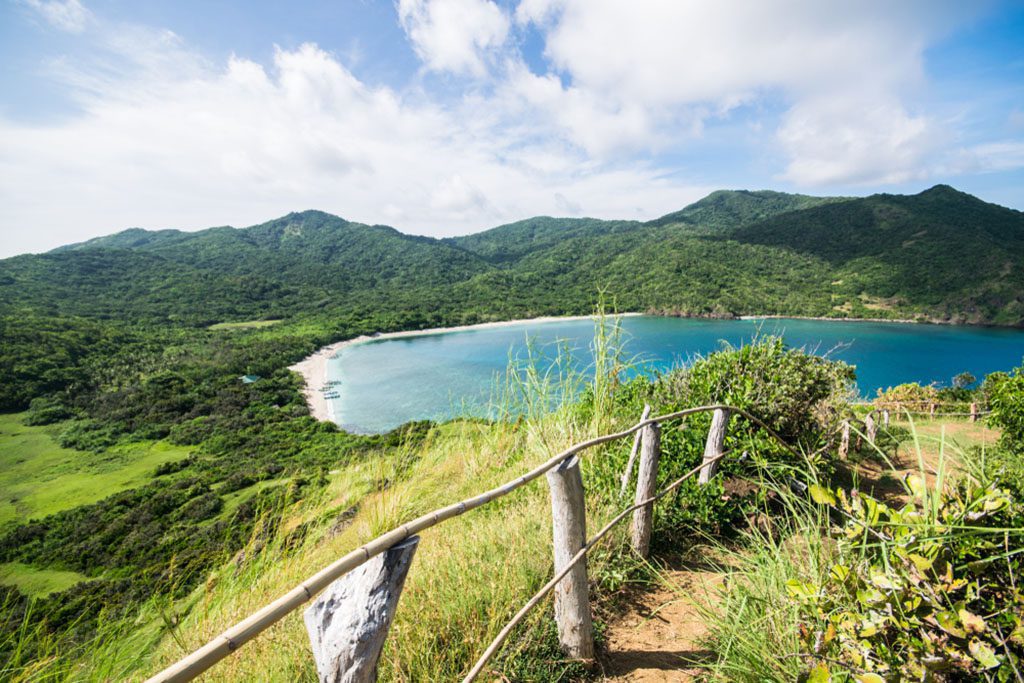
A breathtaking view of the Palaui Island – Sta Ana – Cagayan Protected Landscape and Seascape in Santa Ana, Cagayan, Philippines. Image source: RCB Photography/Shutterstock.com
In the Cagayan province of the Philippines, the island of Palaui is a component of the town of Santa Ana. It’s easy to see why this area was designated as a national park and marine reserve; it has waterfalls, mangrove forests, agriculture, and volcanic vistas. Actually, the island’s forest covers around two-thirds of the landmass, making it a haven for several species of animals and birds.
With its now-famous status as a “Survivor: Blood vs. Water” production site, Palaui also snatched tenth place from all other contenders on CNN’s ranking of the world’s 100 best beaches. Siwangag Cove is a great place to relax and take advantage of the water.
The island provides a true escape to nature by having neither hotels nor restaurants. If you want to spend the night, you’ll have to choose between staying with a local family or setting up your own tent since there are no hotels or lodges available. The summer months of February through May provide calmer waves for boat travel, making them the ideal months to explore Palaui.
Fishing and jungle hiking are two more options. The island has two major hiking paths, but the one from Punta Verde, the only village, to Cape Engano Lighthouse, the most popular destination, is the one to take.
10. Malcapuya
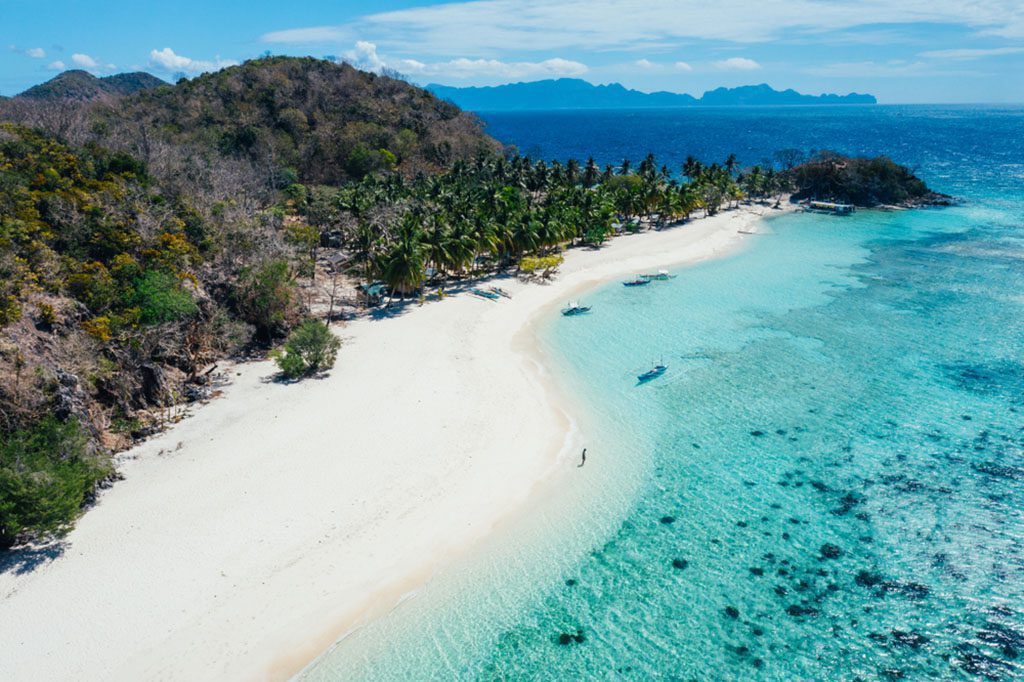
A stunning view of Malcapuya Island in Coron Province, Philippines. Image source: oneinchpunch/Shutterstock.com
Malcapuya Island, Palawan, may be just an hour away by boat from Coron Town, yet it seems like another world. It’s the epitome of the tropical island cliché, complete with turquoise waters, bobbing Filipino boats, coconut palms, cashew trees, and powdery white sand beaches.
It’s hard to imagine a more underdeveloped place than Malcapuya. There are no modern conveniences like hotels or grocery stores; in fact, the nearest establishment is a coconut vendor. Malcapuya is perfect for you if you’ve always dreamed of camping out on a desert island or sleeping in a rustic beach shack.
Relax in the sun and swim or snorkel with tropical fish and other marine life. You might also arrange a day trip to one of the nearby islands, such as Bulog Dos or Banana Island.
9. Luzon
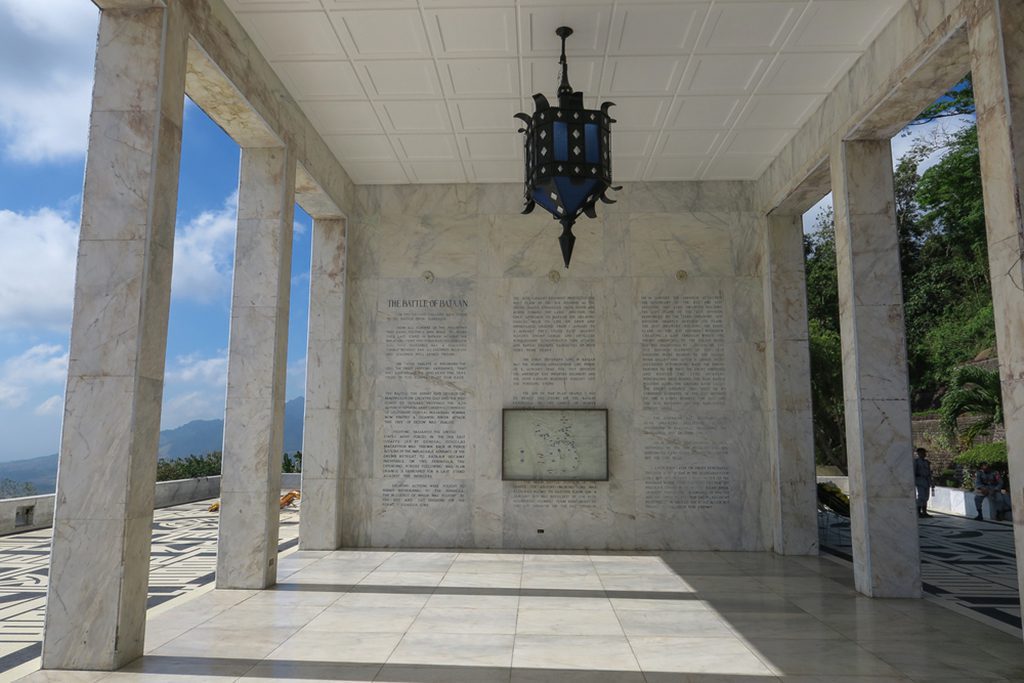
A picturesque view of the charming town of Pilar in Bataan, Philippines. Image source: N8Allen/Shutterstock.com
The Philippines’ capital, Manila, and the country’s primary airport are both located on the island of Luzon. The island has a thriving agricultural sector that produces rice, bananas, coconuts, mangoes, sugarcane, grains, and other crops; it also mines iron, manganese, copper, and gold, making it completely self-sufficient even without the tourist business.
There’s more to this tropical island’s allure than simply its fertile farming, however. The authentic villages, stunning beaches, spectacular volcanoes, magnificent coral reefs, and breathtaking sunsets are only the beginning. The museums, monuments, and buildings left behind from the Spanish colonial era are magnificent in and of themselves.
Luzon is so big that it has been divided into two sections: north and south. The northern region is a natural playground, complete with verdant rice terraces, dense jungles, and secluded beaches. Hiking, caving, and mountain biking are all popular activities that bring adventure tourists here.
In the south, where there are active volcanoes and beautiful beaches, you’ll find a more natural environment. Explore the island’s volcanic craters, swim with whale sharks in the clear waters, and ride the massive waves created by the regular typhoons.
8. Coron
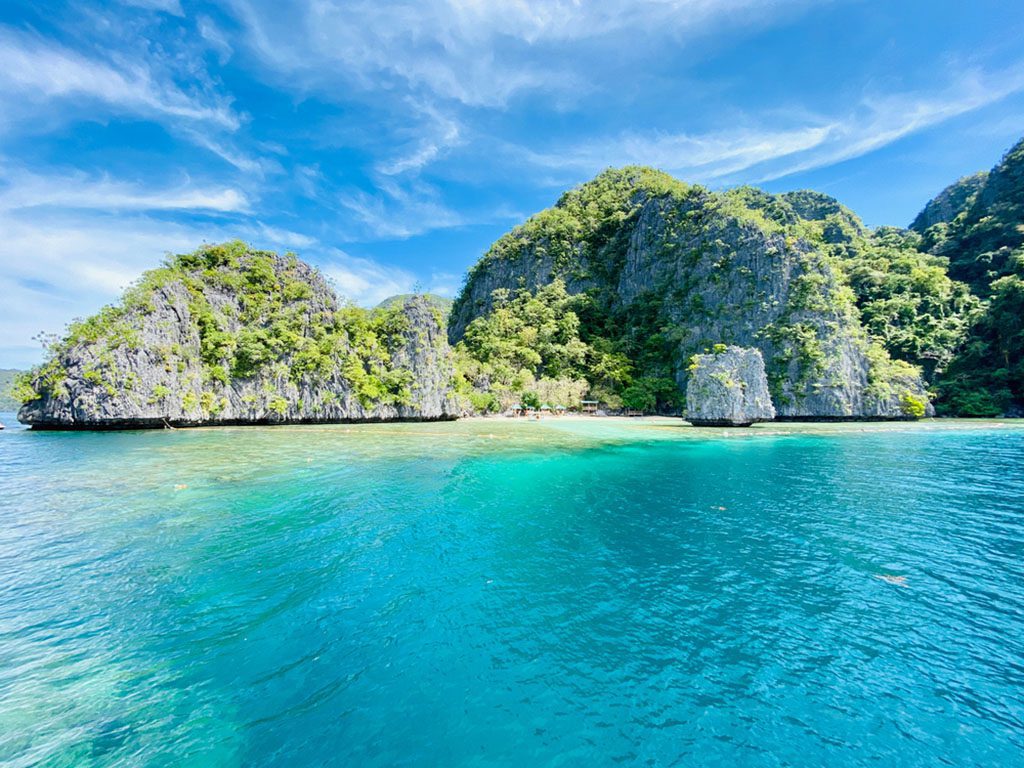
A breathtaking view of the captivating Coron Island in the Philippines. Image source: zagnataly/Shutterstock.com
Coron Island is the third-largest of the Calamian Islands in northern Palawan and should not be mistaken with Coron Town, the main town and fishing village on neighboring Busuanga Island. Getting there takes around 20 minutes by boat from Coron Town.
Coron is home to several lakes, lagoons, and jungles that are so thick they are almost impossible to traverse. The Tagbanua are a native people who live on the island and subsist as fishermen, hunters, and gatherers; they have restricted tourists there out of concern for their way of life. There are several lakes on the island, but only two can be seen now.
Travelers to the island can enjoy snorkeling in Kayangan Lake, scuba diving in Barracuda Lake, sunning on Banol Beach, and swimming in the Twin Lagoon. Divers flock to Coron Bay because of the several sunken Japanese ships that lie in wait there.
7. Bohol
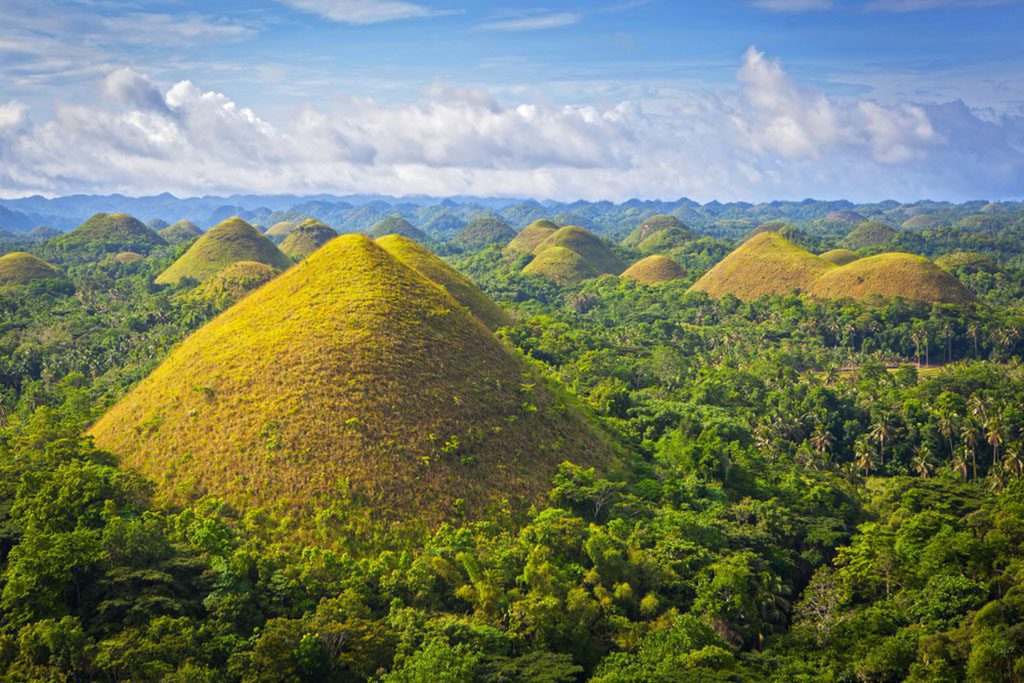
A breathtaking panoramic view of the famous Chocolate Hills in Bohol Island, Philippines. Image source: Eva Mont/Shutterstock.com
In the province of the same name, life on the island of Bohol can be as laid-back or exciting as you choose. Although Bohol is just an hour’s flight from Manila, arriving there is like traveling back in time. Although the majority of Bohol Island remains unspoiled, the neighboring island of Panglao is a famous tourist destination and scuba diving hotspot that is linked to Bohol by a bridge.
In addition to its rice fields, picturesque fishing villages, and dense mangrove forests, Bohol is famous for its dome-shaped Chocolate Hills and a unique population of endangered tarsiers, often regarded as the smallest primate in the world.
Not everything on Bohol is as relaxing as that, however. Stop at the Blood Compact site, take lunch at a riverbank restaurant on a floating platform, and learn about the island’s Spanish coral-built churches. You could also go scuba diving, sea kayaking, or stand-up paddleboarding.
In May, you can experience a plethora of celebrations, festivals, and pageants.
6. Mindoro
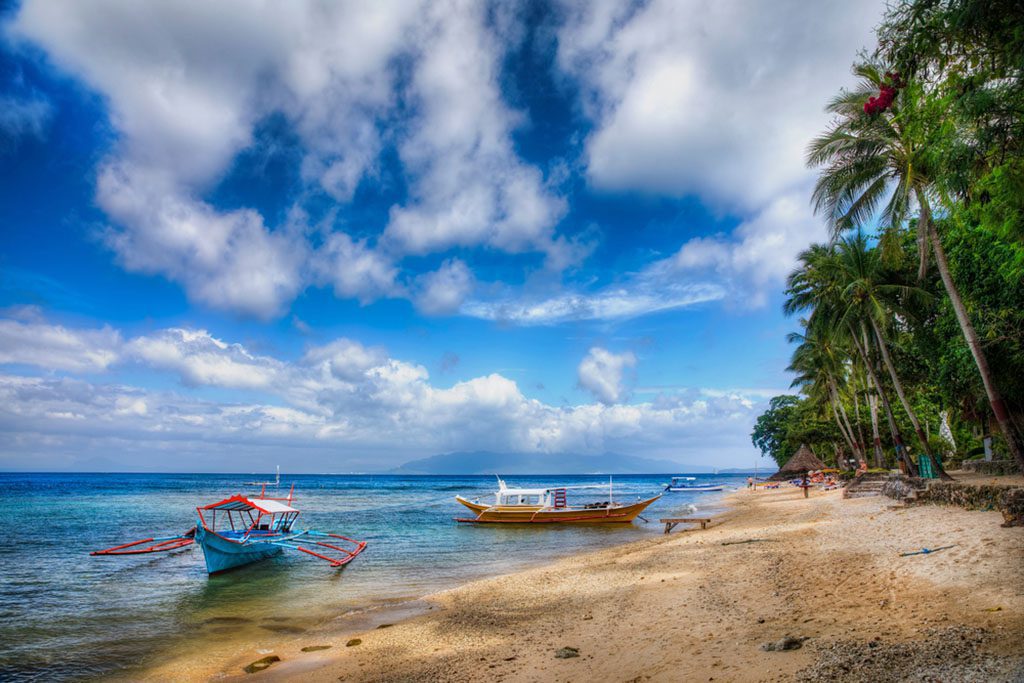
A serene beach scene near Puerto Galera on the beautiful island of Mindoro, Philippines. Image source: Rolf E. Staerk/Shutterstock.com
The island of Mindoro in the Philippines is one of the few places in the archipelago to be mostly left to nature. Mindoro’s abundant marine and terrestrial protected areas make it an appealing travel destination for those in search of stunning scenery and exciting adventures.
Mindoro Occidental and Mindoro Oriental, the latter of which is more developed, make up the island’s two provinces, which are separated by the almost impassable High Rolling Mountains. Taken as a whole, Mindoro is a fantastic tropical getaway. Explore the island’s interior to learn about the Mangyan people, scuba dive the marine resorts at Puerta Galera, and swim the diving paradise Apo Reef on the west coast.
Mounts Iglit-Baco National Park is a paradise for animal enthusiasts, with opportunities to see uncommon species like the Mindoro dwarf buffalo.
5. Caramoan Islands
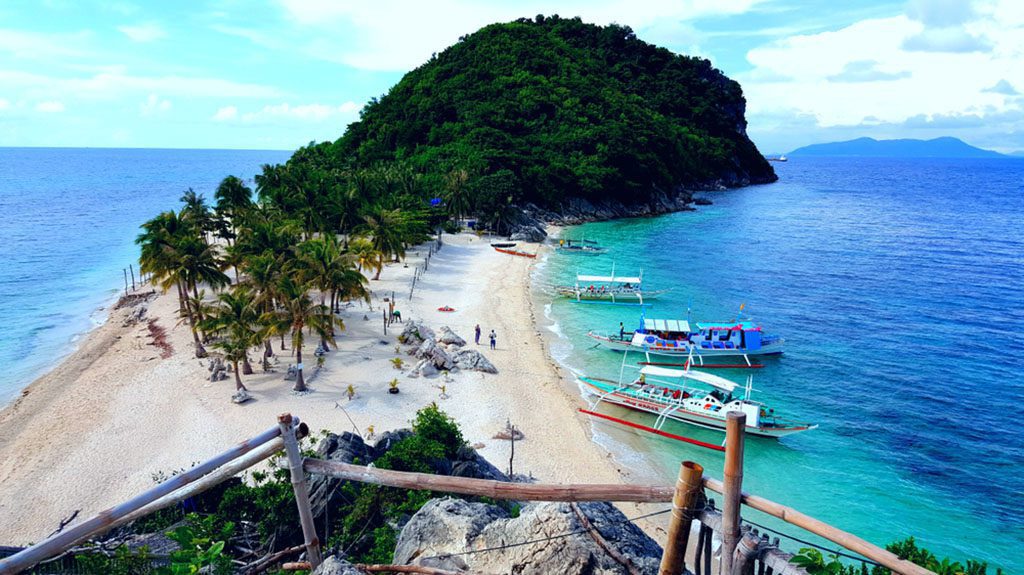
A breathtaking view of the stunning Caramoan group of islands in the Philippines. Image source: Larry Uy/Shutterstock.com
The Caramoan islands have been selected as a setting for Survivor because of their surreal combination of forbidding cliffs, aquamarine ocean, and disappearing stretches of picture-perfect beach. Don’t expect to have the place to yourself; in recent years, it’s become a favorite weekend hideaway for local Filipinos.
As the primary resort, Paniman serves as the jumping-off point for several boat tours to nearby islands. Visit the surrounding islands of Lahos and Matukad, where you’ll find a hidden lagoon. The unique green racket-tail calls this national park home, making it a popular destination for those interested in nature hikes and bird watching.
The town of Caramoan on the Caramoan Peninsula is the jumping-off point for exploring the park’s stunning beaches, towering limestone cliffs, and underground caverns. You can drive to it on a brand-new road, but getting there by boat will give you a whole other perspective.
4. Panglao

A mesmerizing view of the popular Dumaluan Beach in Panglao Island, Philippines. Image source: MDV Edwards/Shutterstock.com
One of the few islands in the Philippines that is accessible by car is Panglao, in the northern Bohol Sea. Being linked to Bohol by a bridge makes it one of the most accessible islands in the archipelago.
Panglao’s waters are a scuba diver’s paradise, teeming with life and bursting with color. Panglao is most known for the famed southern coast resort of Alona Beach, but the island also has fantastic nightlife, especially on weekends and holidays.
Panglao is conveniently located near the airport, making it a good base from which to explore Bohol, one of the Philippines’ biggest islands. Snorkeling, sea kayaking, and scuba diving are just a few of the most popular water sports.
3. Bantayan
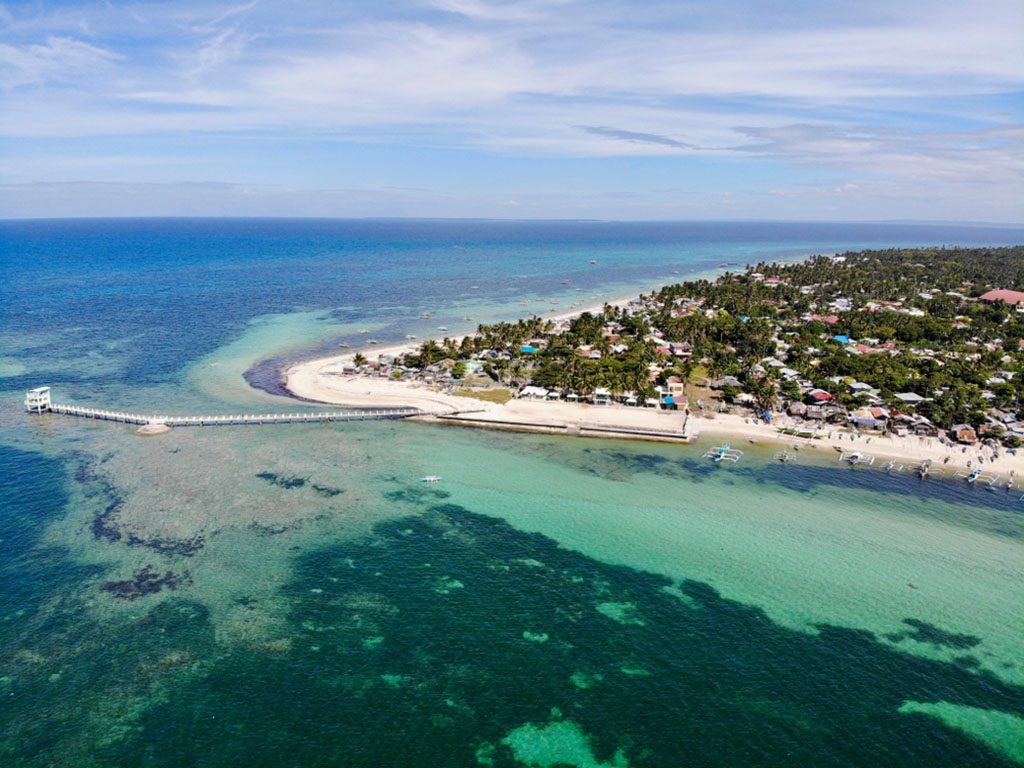
A stunning view of the picturesque Bantayan Island in Cebu, Philippines. Image source: Abs Shrestha/Shutterstock.com
Located west of Cebu in the Visayan Sea, on an island called Bantayan, you’ll find yourself in complete isolation. There isn’t much to do even on a good day, but visitors enjoy it for the beautiful, deserted beaches and easygoing vibe. There is no better area to go for a relaxing beach vacation away from the maddening crowds than the one you have just located.
As there are not many cars on the island, cruising about on a scooter is a wonderful option. Santa Fe is a great place to set up camp since it is a little village with its own beach and a wide selection of bars. Bantayan Town, the island’s capital, and the nearby tropical islets are also popular tourist destinations.
Most of the year, Bantayan is rather calm, but during Holy Week, the town becomes crowded. You may do skydiving, scuba diving, snorkeling, sea kayaking, cycling, and island hopping throughout the day.
2. Boracay
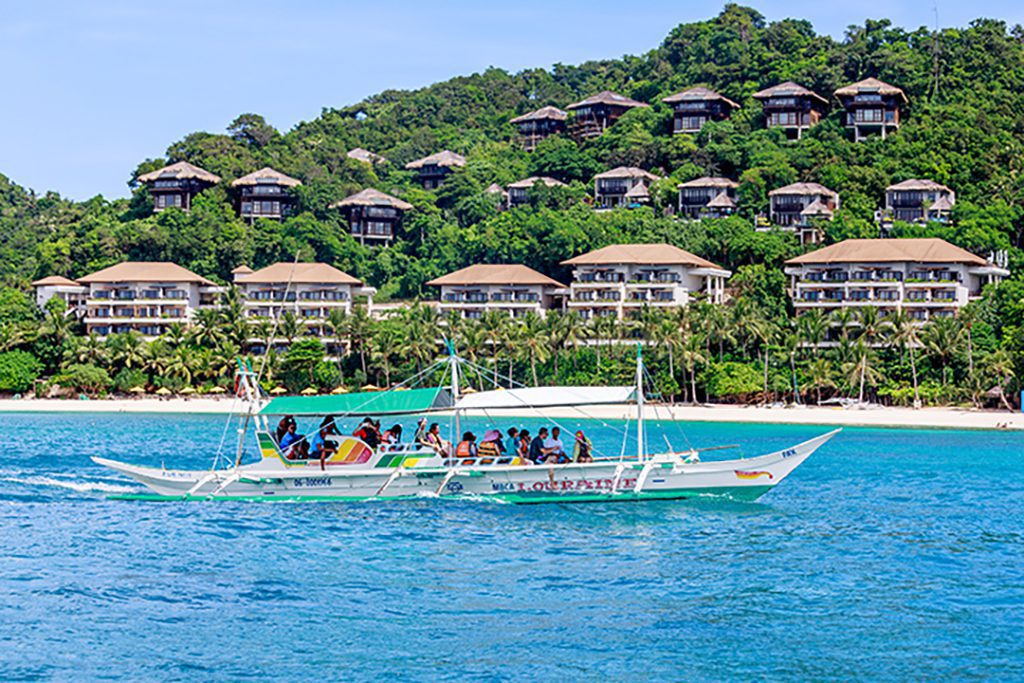
A mesmerizing view of the breathtaking Boracay Island in the Philippines. Image source: ARTYOORAN/Shutterstock.com
In order to recover from the massive flood of tourists, the Philippines’ most popular island, Boracay, was closed for six months. The attraction is available to the public once again, but only a certain number of people are allowed in each day.
Boracay Island’s biggest draw is its picture-perfect white beach. There are, however, many additional little beaches and coves where you can engage in activities as diverse as kitesurfing and scuba diving.
The wild, multi-day beach parties on Boracay, complete with beach bonfires and fire dance acts, are a thing of the past due to the island’s new, more stringent regulations. There are strict rules against having fires, lighting cigarettes, and drinking alcohol on the beach. You should instead take it easy by relaxing at a beachside bar, touring the island on a tricycle, or sailing around the islands on a traditional paraw boat.
1. Palawan
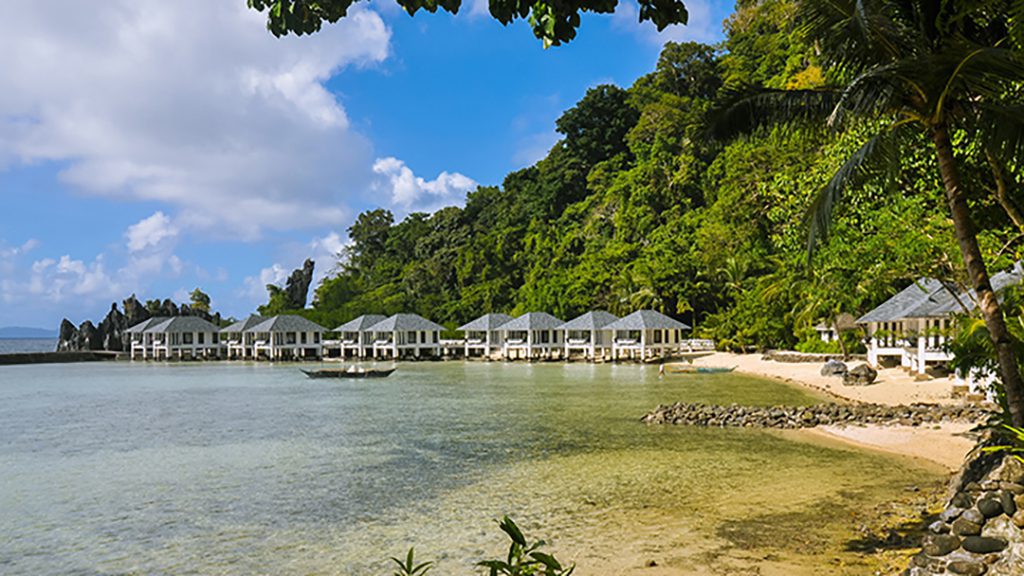
A panoramic view of the enchanting El Nido in Palawan, Philippines. Image source: jejim/Shutterstock.com
The province of Palawan (also known as Palawan) is one of the world’s top two islands to visit, ranked second only to Sri Lanka by Travel & Leisure.
Even by Filipino standards, the island is a paradise due to its stunning limestone karsts, magnificent beaches, hidden coral reef bays, and jungle-clad mountains.
You can go to the remainder of Palawan and the mangrove islands of Honda Bay from the capital city, Puerto Princesa. El Nido is known for its beautiful lagoons, and the lovely sands of Long Beach are also well worth the trip. Other noteworthy destinations are the beach resorts of Port Barton and Taytay, both of which include wonderful old fortresses.
However, many regions of Palawan remain underdeveloped and unvisited by tourists, despite being just as or more interesting. San Vicente, a fishing village, and the Tabon Caves and Narra, sanctuaries for turtles and cockatoos in southern Palawan, are among them.
Take some time off the northern edge of Palawan to explore the Calamian island group. The shipwrecks from World War II provide some of the best scuba diving in all of Asia.


